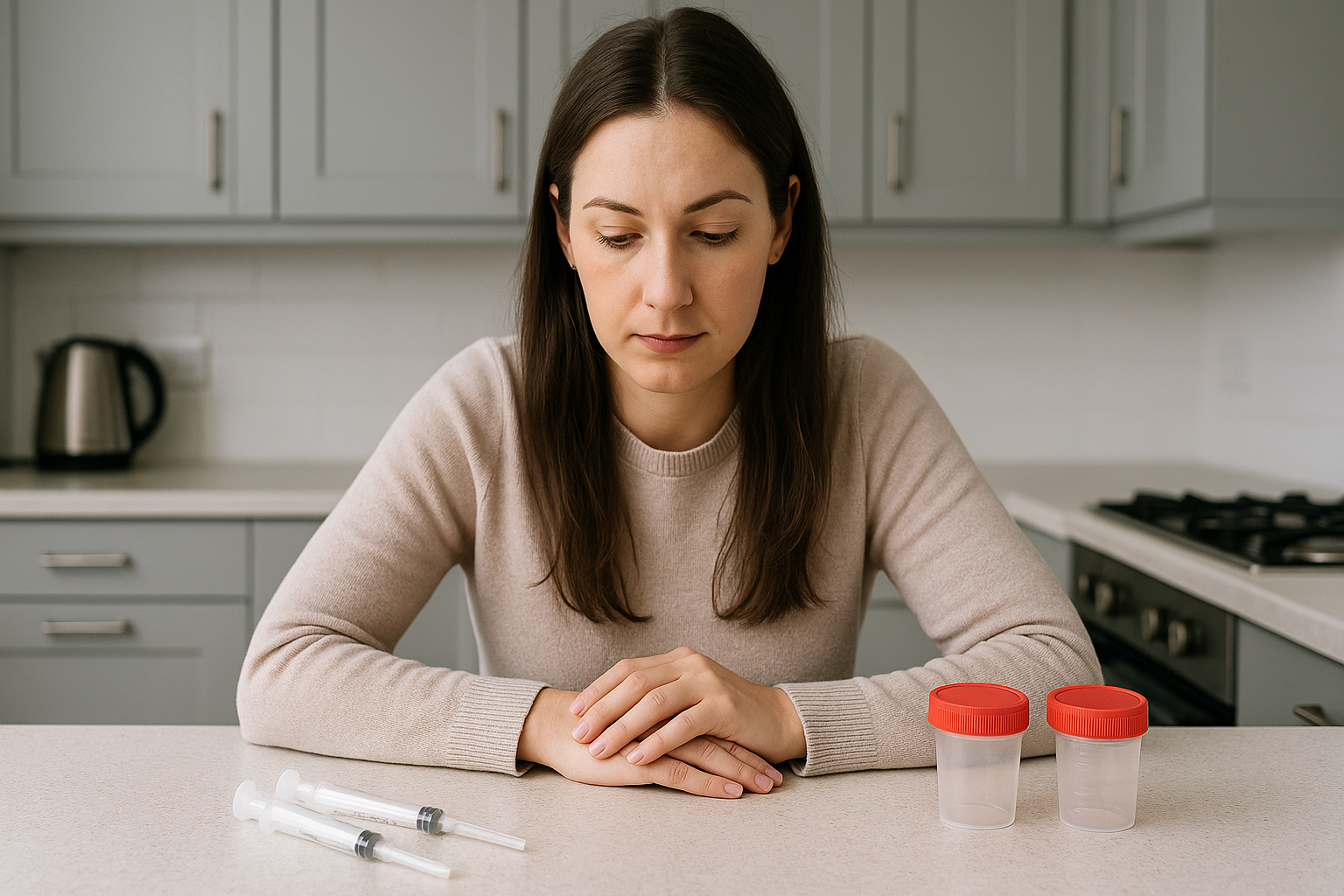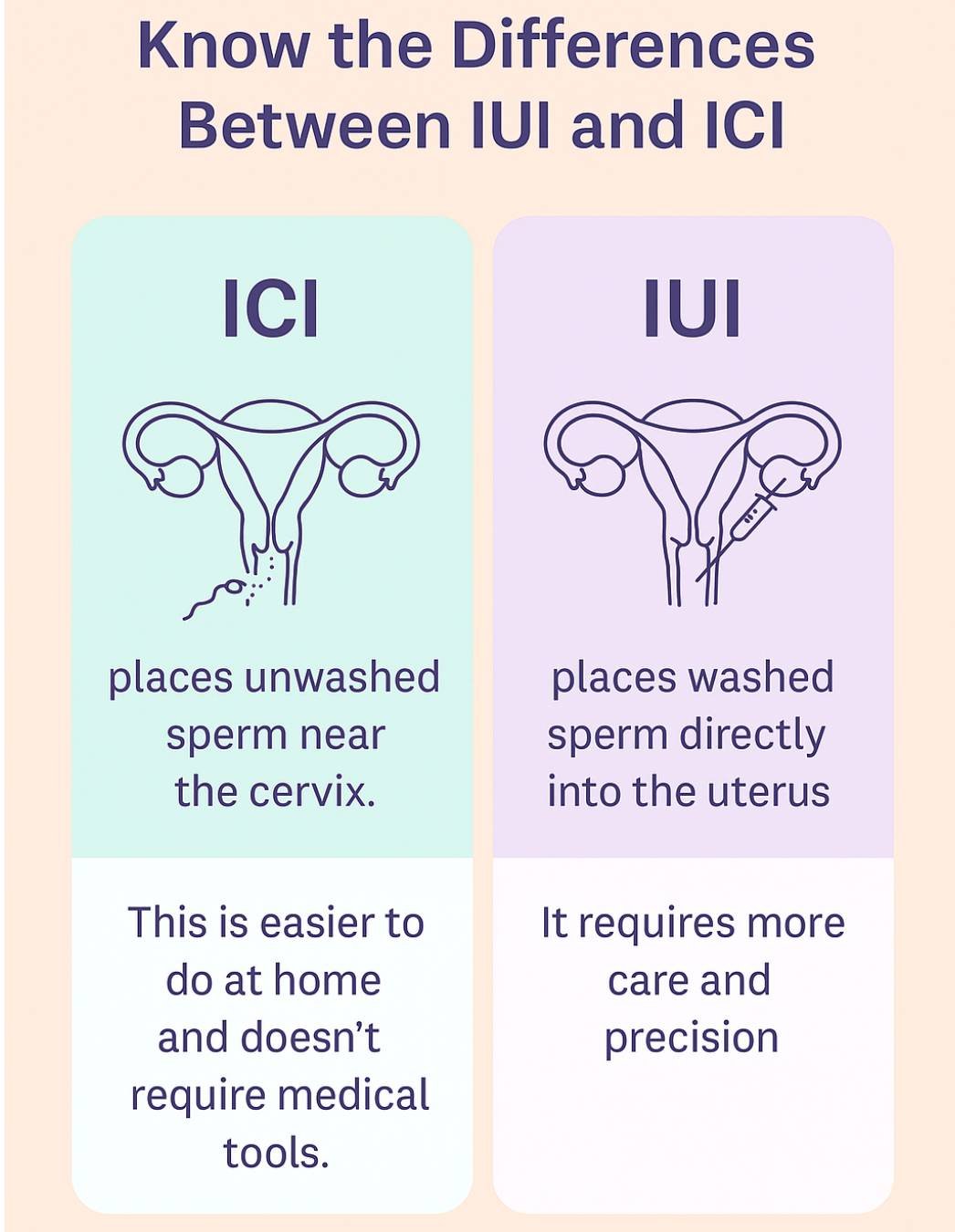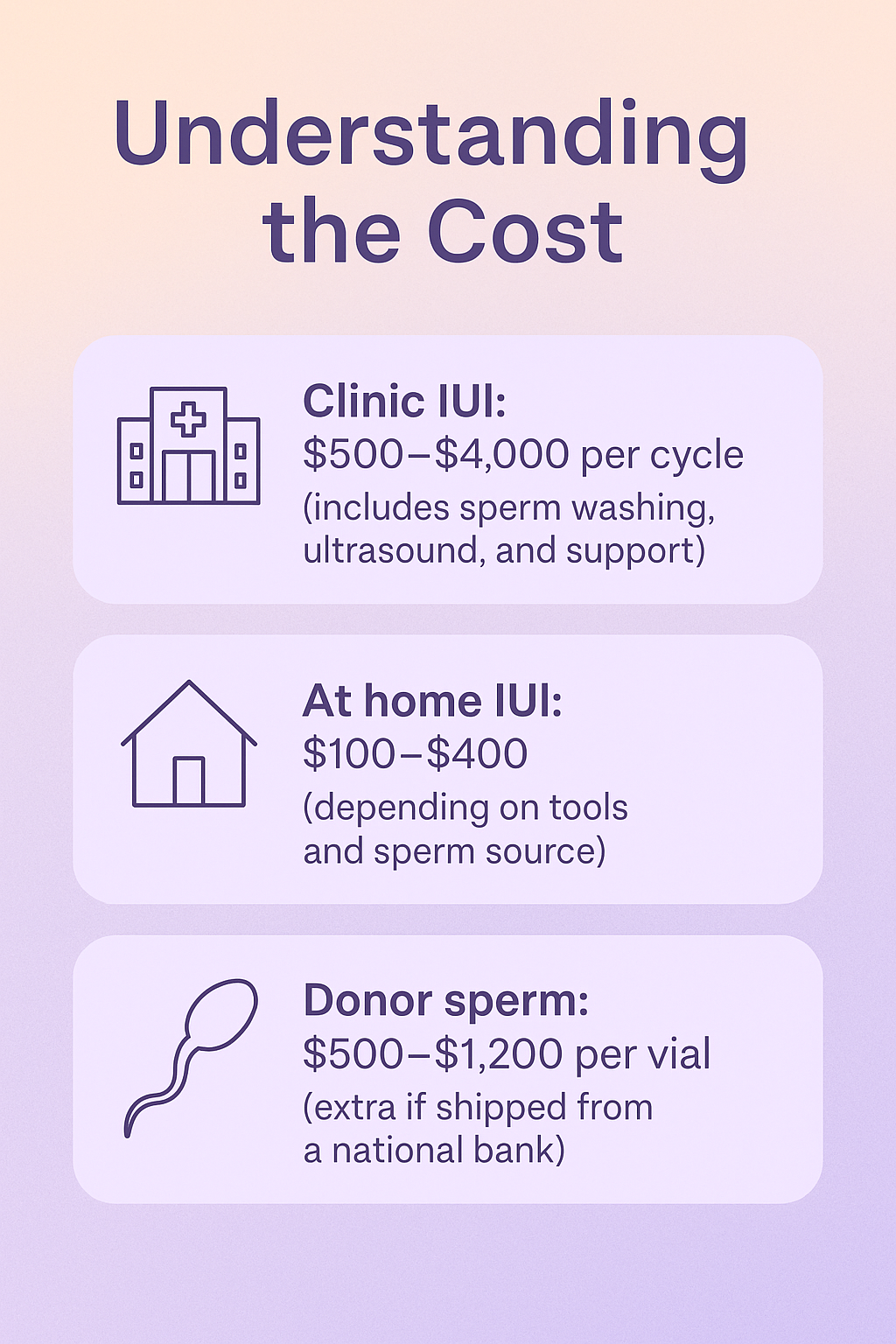What Is At Home IUI and Who Tries It?

At home IUI means doing intrauterine insemination outside a medical clinic, usually in a home setting. It’s not the same as vaginal insemination (which places sperm near the cervix). IUI involves inserting washed sperm directly into the uterus, which normally happens in a doctor’s office. But some people look for ways to do this at home.
Here’s how it works. A thin catheter passes through the cervix to place sperm inside the uterus. The goal is to shorten the sperm’s journey and improve the odds of fertilization. While IUI is typically done by trained professionals, some couples or individuals try it themselves with guidance and the right tools.
 Why Some Choose At Home IUI
Why Some Choose At Home IUI
There are several reasons people consider doing IUI at home:
Clinic procedures can be expensive and stressful
Appointments may not align with ovulation timing
Some prefer the comfort and privacy of home
It may feel more personal, especially for couples using known donors
People trying at home IUI often include:
Single women trying to conceive with donor sperm
Lesbian couples using donor sperm
Heterosexual couples facing mild male infertility
Those who’ve tried vaginal insemination (ICI) without success
Doing IUI at home is more complex. It’s not recommended without training or professional guidance. The cervix must be gently passed, and there’s a risk of infection or injury if done wrong.
Still, some people attempt it after watching professionals or getting step-by-step help. Others work with a midwife or nurse.
Who Might Be a Good Fit for At Home IUI?
Home IUI is not for everyone. It may work best for:
Women under 35 with regular cycles and no fertility issues
People using sperm that has been properly washed
Those who understand the risks and follow sterile procedures
It’s not a good idea for:
Anyone with blocked tubes or known fertility problems
People using unwashed sperm for IUI (it must be washed to avoid cramping or infection)
Anyone unsure how to safely pass the catheter
In many cases, people start with ICI at home. If it doesn’t work after several tries, they either seek help or try IUI under guidance.
What You Need for At Home IUI

Before trying at home IUI, it’s important to have the right tools, understand the costs, and take safety seriously. This section covers what supplies you’ll need, where to get them, and how to reduce risks.
Supplies Checklist
These are the basic items used for at home IUI:
IUI catheter – A thin, flexible tube that goes through the cervix
Syringe (5–10 mL) – Used to push sperm through the catheter
Sterile semen collection cup – To hold the sperm sample
Ovulation predictor kits (OPKs) – To find your LH surge
Latex-free gloves – For handling tools without contamination
Alcohol wipes – For cleaning surfaces and hands
Optional: Speculum and small flashlight for visibility
You should never use kitchen tools, eye droppers, or non-sterile items. Even if it feels “DIY,” this is still a medical process and needs care.
Where to Get Tools
You can order IUI supplies online from medical and fertility supply stores. Some sperm banks include catheters and syringes with donor shipments. Prices vary based on brand and bundle.
Some people also choose to build their own kit using safe, medical-grade parts. But always make sure everything is sterile and unopened before use.
The Home Insemination Guide offers a low-cost option with 2 sterile syringes and 2 collection cups for under $20—perfect for those starting out with ICI or trying simple insemination before IUI.
Some costs are lower with known donors, but always screen for infections. Sperm should be tested before use.
Is At Home IUI Safe?
There are real risks if IUI is not done correctly. These include:
Uterine infection from unclean tools
Injury to the cervix or uterus
Cramping or pain from using unwashed semen
That’s why most providers don’t recommend at-home IUI unless you’ve been shown how to do it by a nurse or doctor. IUI requires passing a catheter through the cervix, which takes care and practice.
If you’re unsure, stick to ICI or work with a licensed midwife or fertility nurse.
How to Do At Home IUI Step by Step

Doing at home IUI requires good timing, the right tools, and a careful, sterile approach. This section explains how to perform the process and offers tips to boost success.
Step-by-Step Instructions
1. Prepare the Space and Tools
Wash your hands thoroughly.
Wipe down the surface where you’ll be working.
Lay out your supplies: syringe, catheter, gloves, collection cup, alcohol wipes, OPK results.
Put on gloves and open all packaging without touching the tips of the tools.
2. Collect the Semen Sample
If using fresh sperm, collect it in a sterile cup.
Let the sample liquefy at room temperature for 15–30 minutes.
If using frozen donor sperm, follow the thawing instructions from the sperm bank.
3. Track Ovulation
Use ovulation test strips to catch your LH surge.
The best time to inseminate is 12–24 hours after the surge.
Some people inseminate two days in a row to increase chances.
4. Load the Syringe
Attach the IUI catheter to the syringe.
Draw up the semen slowly and carefully to avoid bubbles.
Insert the catheter gently into the vagina and aim for the cervix. You may need a mirror or a partner’s help.
5. Insert the Catheter
Slowly pass the catheter through the cervical opening into the uterus.
Push the plunger gently to release the sperm.
Remove the syringe and catheter carefully.
6. Lie Still
Stay lying down with hips slightly raised for 15–20 minutes.
This allows the sperm to stay near the top of the uterus.
Key Tips to Improve Success
Use washed sperm: Unwashed sperm can cause cramping or infection when placed in the uterus.
Avoid multiple attempts in one session: Inserting the catheter repeatedly can cause irritation.
Track cycles for a few months before trying IUI to learn your fertile window.
Have help: A partner or friend can make things easier and safer.
Is At Home IUI Comfortable?
Most people say it feels similar to a Pap smear. You may feel slight pressure or cramping, especially as the catheter passes through the cervix. If it hurts, stop. Pain can be a sign the catheter isn’t placed correctly.
If you’ve never seen how IUI is done, consider watching a nurse or midwife do it first. Even better, ask one to guide your first try at home.
What If At Home IUI Doesn’t Work?

Some people get pregnant on the first try. For others, it can take several cycles—or more help. Knowing when to keep trying and when to ask for support is part of the process.
How Many Cycles Should You Try?
If you’re under 35, most doctors suggest trying IUI for 3 to 6 cycles before moving to IVF.
If you’re over 35, you may want to try fewer cycles before getting a fertility workup.
Age, egg quality, sperm health, and timing all matter.
If your cycles are regular, sperm quality is good, and you’re timing it right, the chances go up over time. But if you’re not seeing results after a few cycles, it might be time to check for problems.
When to See a Doctor
No positive pregnancy after 3–6 IUI attempts
Irregular periods or signs of hormone issues
Trouble predicting ovulation
Past pelvic infections or known reproductive issues
Low sperm count or motility
In these cases, it helps to get a fertility evaluation. That may include hormone tests, ultrasound, or semen analysis.
At Home IUI Success Rates vs. Clinic
There’s not a lot of large-scale research on at-home IUI, but some small studies and reports show success when it’s done properly. When timing and tools are right, the rates can be close to clinic IUI:
Clinic IUI success rate: 10%–20% per cycle (depends on age and health)
At home IUI: Less studied, but possibly 8%–15% when done correctly with washed sperm
The biggest risk is doing it without guidance. Even a short call with a nurse or midwife can make a big difference.
Research on At Home IUI and Related Methods
Results of artificial insemination at home by the partner with cryopreserved donor semen
Compared home vs clinic insemination. Found similar success rates over 6 cycles.Pregnancy Outcome of Home Intravaginal Insemination in Couples with Unconsummated Marriage
Reported clinical pregnancy rates of up to 69% in younger women after several home insemination cycles.Use of home insemination in programmes of artificial insemination with donor semen
Found home insemination to be a valid option in donor programs, with high acceptance and ease of use.
FAQ
Is at home IUI legal?
Yes, it’s legal in most U.S. states, especially when using a partner’s sperm. Using donor sperm can have legal issues around parenthood if not done through a licensed bank.
Can I use unwashed sperm?
No. Only washed sperm should be used for IUI. Unwashed semen can cause cramping or infection if placed in the uterus.
Can I do IUI during any cycle?
It’s best to do IUI during a natural cycle with a clear LH surge, or with fertility meds under medical advice.
How long should I lie down after IUI?
Most people lie down for 15 to 30 minutes to give the sperm time to move toward the egg.
Is IUI at home as good as the clinic?
If done properly with the right tools and sperm, success rates can be close. But safety and support are higher in a clinic setting.





